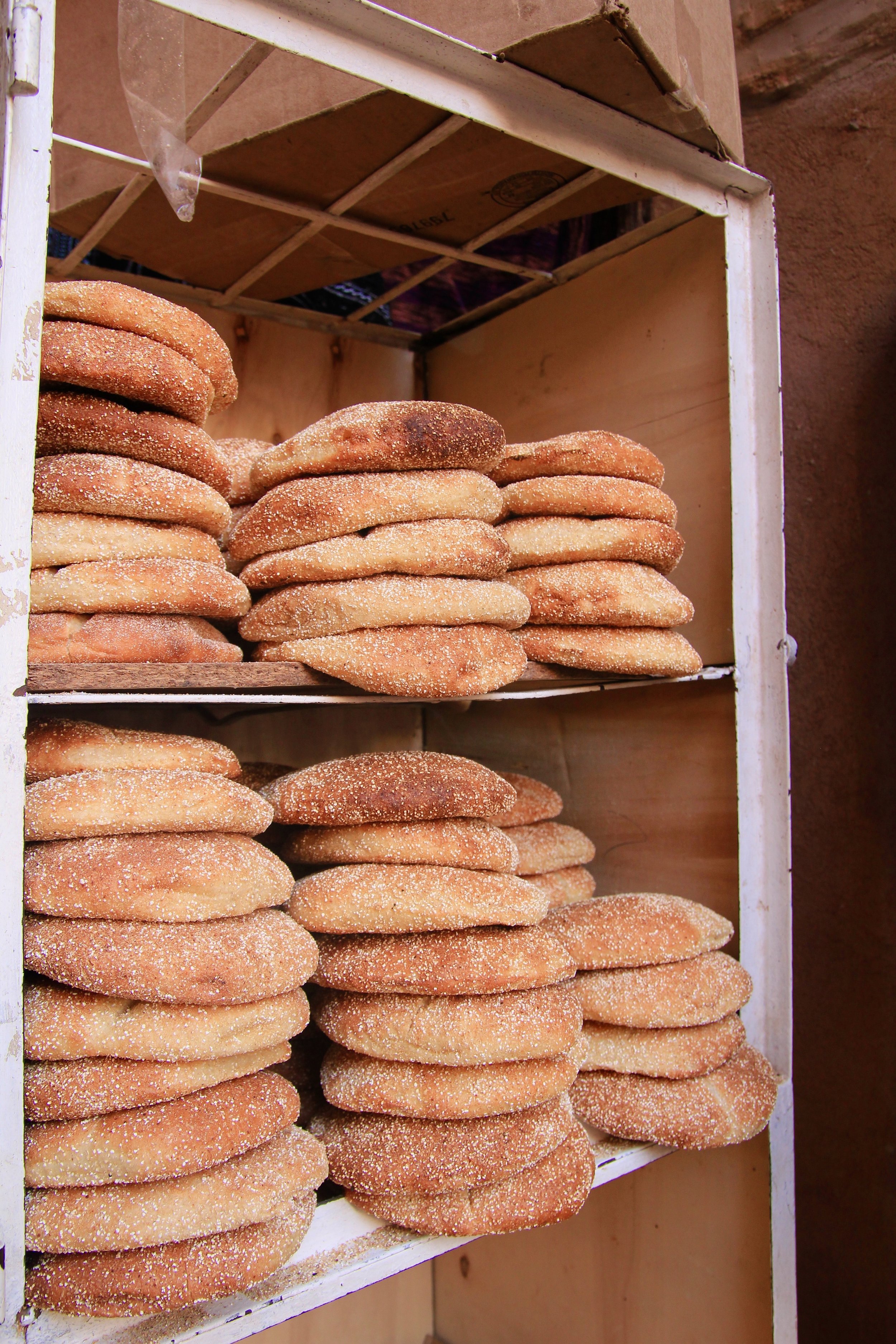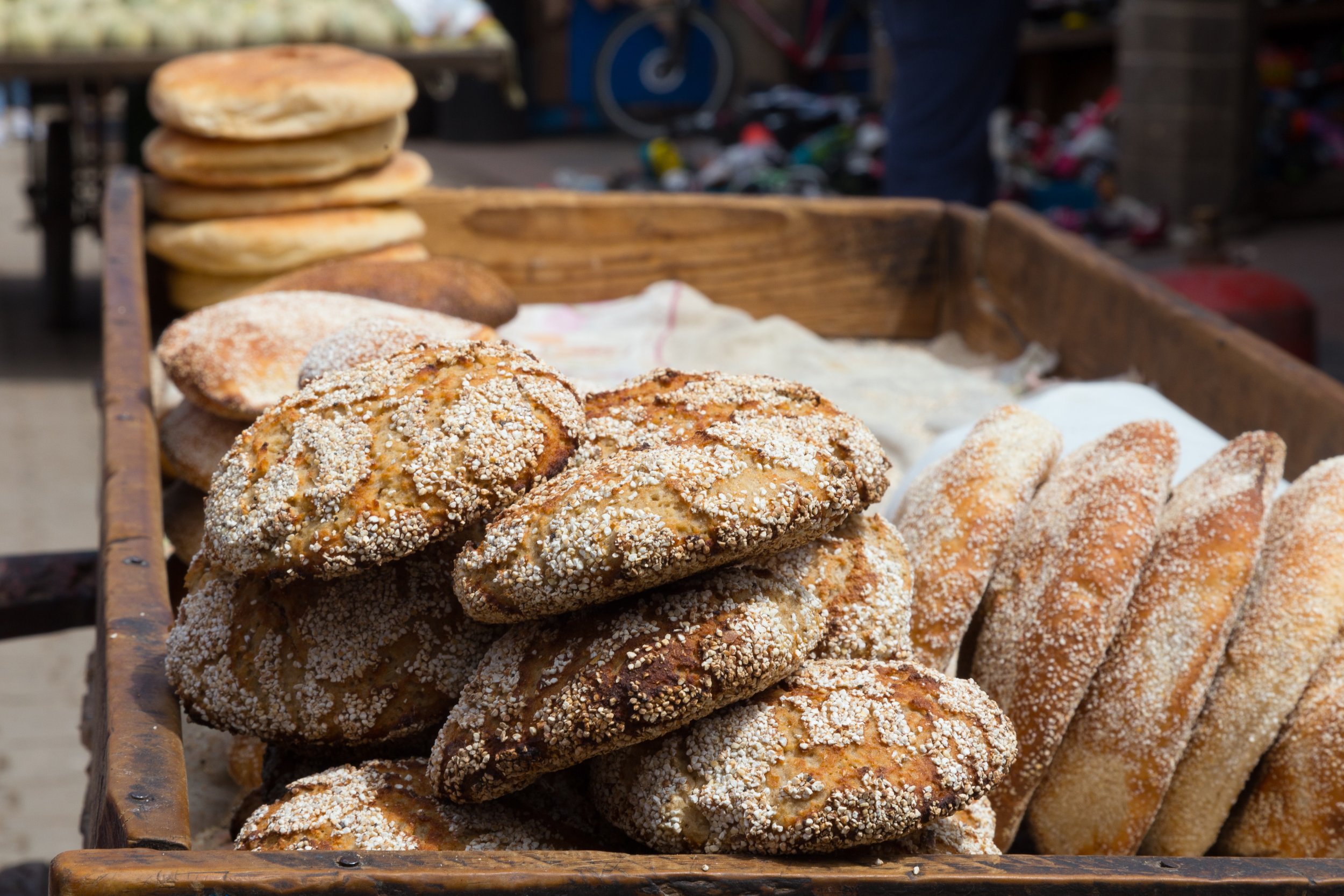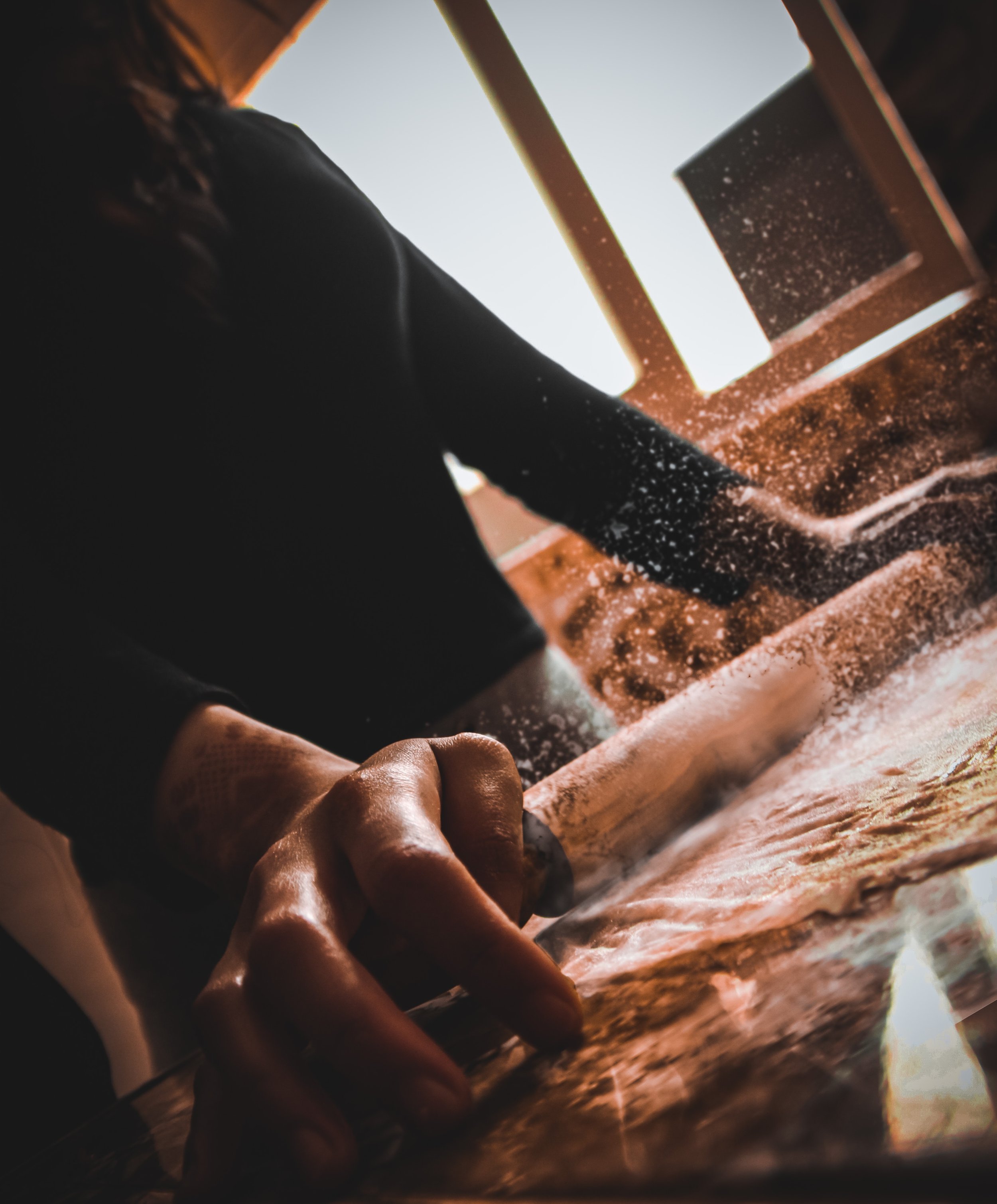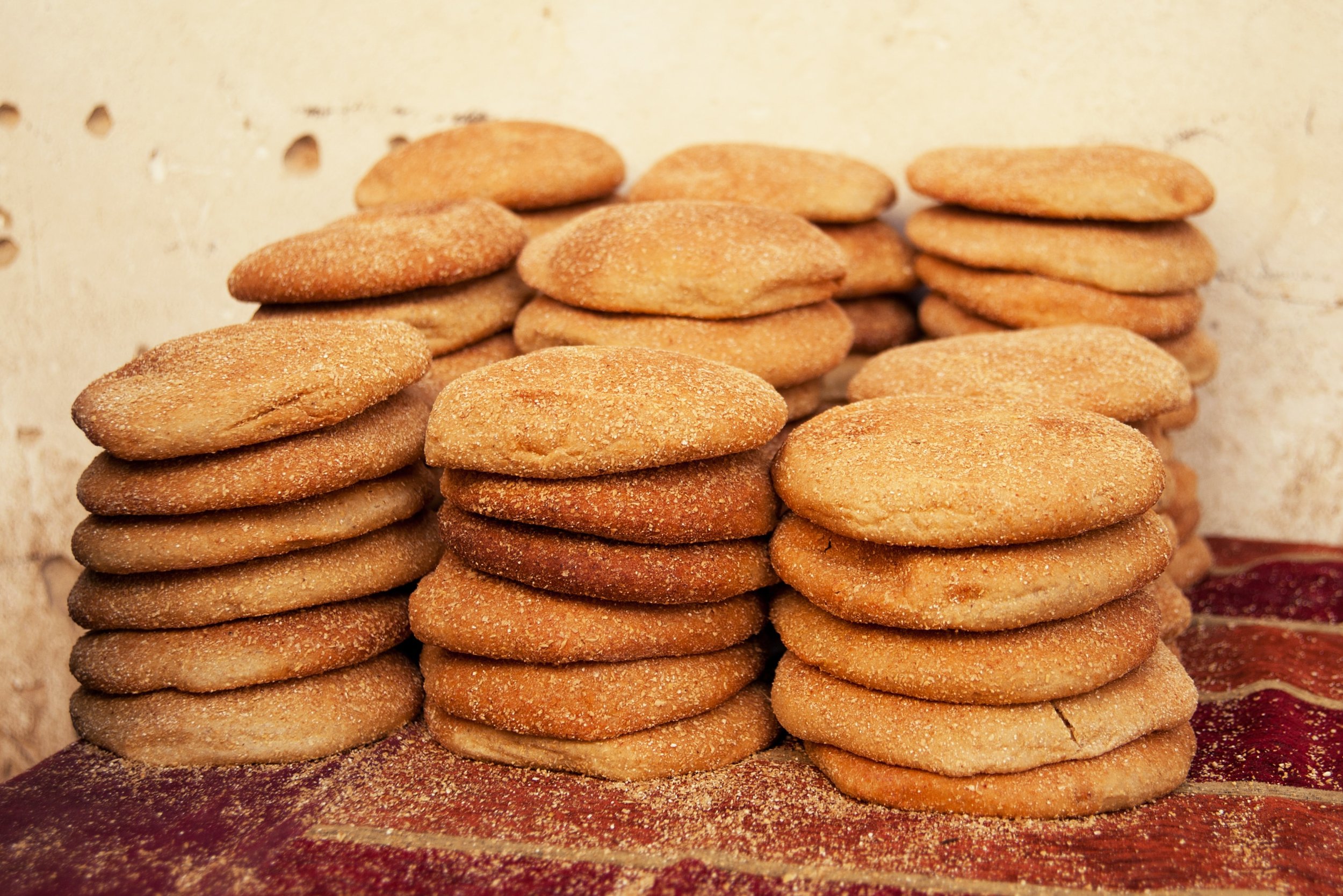Moroccan breads
Moroccan cuisine is a vibrant tapestry, and its threads are often woven from flour and water. Bread plays a starring role, not just as sustenance but as a cultural centerpiece with a rich history and diverse personalities. Let's knead our way through some of the most beloved Moroccan breads:
Khobz: The All-Day Anchor
Picture a round, slightly domed flatbread, the undisputed king of Moroccan tables. This is khobz, a daily companion from breakfast to bedtime. Baked in communal ovens called "furan," it serves as a utensil, a canvas for toppings, and a symbol of hospitality. Its simplicity speaks to Morocco's Berber heritage, where bread was a shared resource and a foundation for community.
A Bread for Every Occasion
While khobz dominates, other breads have earned their special spots. Msemmen, a flaky, layered delight, fuels mornings with honey or argan oil. Batbout, a versatile pita-like pocket, welcomes savory fillings like spiced meats or vegetables. Krachel, a sweet anise-scented bun, brings a festive touch to celebrations. And Rghaif, a savory "Berber pizza," showcases regional variations with toppings like onions and meat.
More Than Flour and Water: Grains of Identity
The distinct character of Moroccan breads lies in their ingredients and techniques. Local flours like wheat, semolina, and barley offer unique textures and earthy flavors. Traditional methods, like hand-kneading and wood-fired ovens, infuse each loaf with artisanal spirit. Every bite connects you to generations of bakers, keeping stories and flavors alive.
From Furan to Fork: A Taste of Community
Moroccan breads transcend the plate. They're threads binding families, communities, and history. Witnessing them being made in a bustling furan or sharing them with loved ones around a meal are experiences that connect you to the heart of Moroccan culture. So, next time you encounter these delicious doughy ambassadors, remember, they're more than just bread – they're a taste of community and a story baked into every bite.






